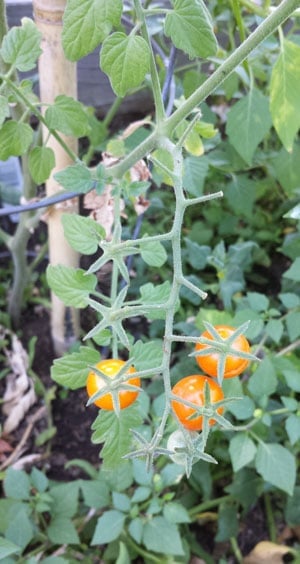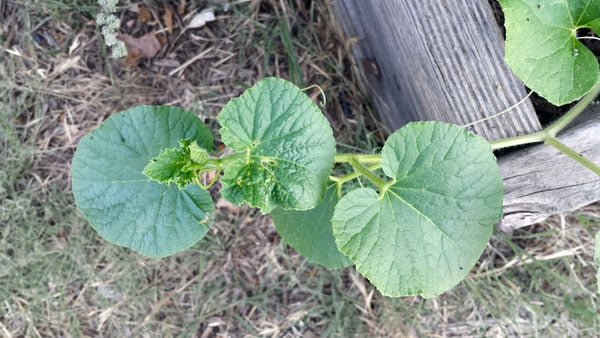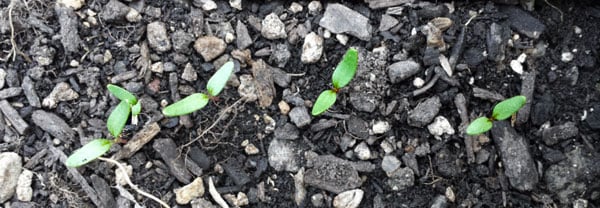As an Amazon Associate I earn from qualifying purchases.

It is July, the apogee of a garden’s lifetime. Walking through this verdant vigor of my own making, I take stock of a great many things, both within the garden and without.
I look to the right and wonder at the strength of my angelica plants — bushes, really. Great green members of the parsley family, their anise-scented loveliness stems from a stout taproot that has probably plunged below the bottom of my raised bed, piercing the plastic ag fabric and tunneling into depths unknown. My brandywine tomatoes are loaded with green fruit, an August bonanza in the waiting. Padron peppers are humming nicely, as are a host of feral tomatillos that are a welcome weed in my garden, paying for their water with hundreds of tiny tomatillos the size of a grape. Salsa verde in the making.

But my failures also live among these standouts. A sungold tomato stunted no doubt by the web of invading roots from a nearby silver maple tree. Truncated melon plants that may just give me one fruit each… in late September. If I’m lucky. A Tabasco that has yet to set a single pepper. Failures all.
I am good gardener, not a great one, so each July I face this same dilemma: Live with my failures, or tear them out and try to start again with what time remains to me. This summer, however, my annual dilemma is not just one of earth and leaf. In a few days I will turn 45, and even at my most optimistic, I must accept that this is the solstice of my life. Tomorrow my days will grow shorter.
Yes, June 22 is but one minute shorter than the solstice itself. But that minute is the wingbeat of a butterfly leading inexorably to another solstice, a darker one. The garden knows it. Plants started after the days shorten grow differently from those born in the waxing days of spring. There is a certain sadness about them, a quiet determination to race the light to some fruition, before the gloom of winter takes them all.
I am not overly maudlin about my state. To be sure, one o’clock is a perfectly fine time to be alive. Indeed, there is a sweetness in a sunset that I hope to see someday. But as my clock ticks, I find myself racing the light.
So it is with sympathy that I tend my stunted sungold and make plans to transplant my recalcitrant Tabasco into a pot, with the hope that I can nurse it through our mild winter until the sun can bathe it one more time. Failures they may be, but they are mine, and I embrace them. Life is not perfect, nor are those around us. Our achievements are flawed, as is our character. Yet here we stand, the sum of our decisions. To contemplate the myriad paths we have passed untrodden would cast us into an oblivion of self-doubt and remorse. No, wounded and patched as we are, we must continue toward our own fruition, whatever it may be.

To that end, I shall not be so sanguine about everything at this high water mark of my short time on this earth. July, as bountiful as it may be, is also a moment to think about what comes next. A garden solely focused on tomatoes is but half a garden. Our own tomato-like vigor will wane as the months tick by, until, when that first killing frost seeps over the soil, it sweeps us away. A well-planned plot survives the frost.
So these days I am making my choices about which of my failures I will nurse along in quiet resignation and which of those I will pull by the up roots to start anew. God willing, a great deal of time remains in which to ensure that the autumn — and, later, the winter — of my life is as vibrant as summer has been. At least, that is my hope.
Maybe I can’t grow tomatoes in November, just as I know that I can no longer run as fast as I once could. But I can still walk all day, over hills and canyons and mountains if need be. And I can still grow beets and carrots and chard, radishes and chicory and lettuces.
Today I walked in my garden, soaking up what has come before and enjoying what is here and now. Tomorrow I will plant, and prepare for the leaves to fall.





Love it.
A beautiful read. I’m just a couple of months south of 52 and have finally gotten to a point where I feel I’m a decent gardener. Ironically enough, I lost my Sun Gold to leaf curl this year.
I wander through the “forest primeval” at least once a day now. Raised beds are phenomenal and I now have tomato hedges so dense I can’t walk between the two beds. Harvesting tomatillos is a dance between me and the bees as I have to shove my head into the middle of the plant to harvest. The pepper and eggplant bed is beyond what I could have hoped for this year and I’m up to four gallons of pickles from one cucumber plant.
As we wander through middle age, especially for those of us who are a bit stove up from abusing our bodies over the years, it’s good to be able to garden. It keeps us moving and gives us meaningful activity. I won’t be buying vegetables for another two or three months because of what we store through the summer. It also makes that first day walking the field in the fall a little easier. 🙂
PS- Homegrown tomatoes have forever ruined me.
I no longer care for the ones from the market!
The angelica you’ve planted, I wonder if it’s the one we use for seasoning. It has a peppery flavor, something close to, but not quite cardamom-like.
Reflection is maturation, good for you.
I have chosen to leave even those plantings which are dry and done, as support for those who carry on. It gives me solace to enjoy such as the frizzled peas that did not pod, the zucchini which will not set, for they are holding soil and I can pull all the plants out later, together, when they’ve had a full if stressful run.
I agree with Jack that with evidence of mortality comes opportunity for contribution of other kinds.
Happy 45!
Very well stated! The very same way I view gardening and life!
You did not mention fried green tomatos. Makes my mouth water just thinking about them.
So profound. Gardens are a reflection of our lives, and you put it beautifully in this posts. And happy birthday!
I am half as old again as you, Hank, and my experience has been life gets better as understanding grows, even as some physical decline sets in. We ourselves live for only one season but we can stay in bloom and be fruitful throughout.
Thank you for the reminder that gardening like life is an ebb and flow. We too have the choice of what to keep and what to start over.
Thank you for this beautiful post.
Excellent post. It reminds me of a song by Brahms called Mit vierzig Jahren. It’s about a guy taking stock of his life, which is half done. A look back at youth, a look ahead to age, a satisfaction with what is now. Cheers,